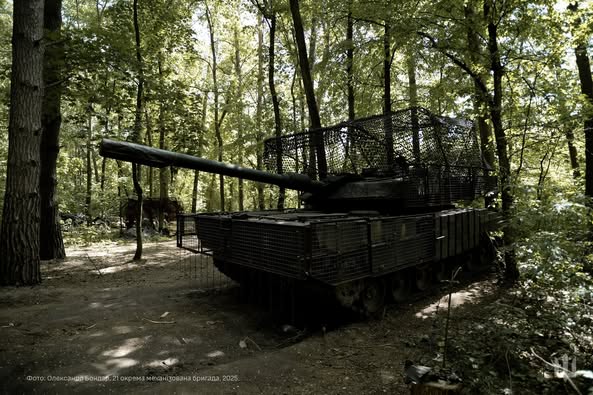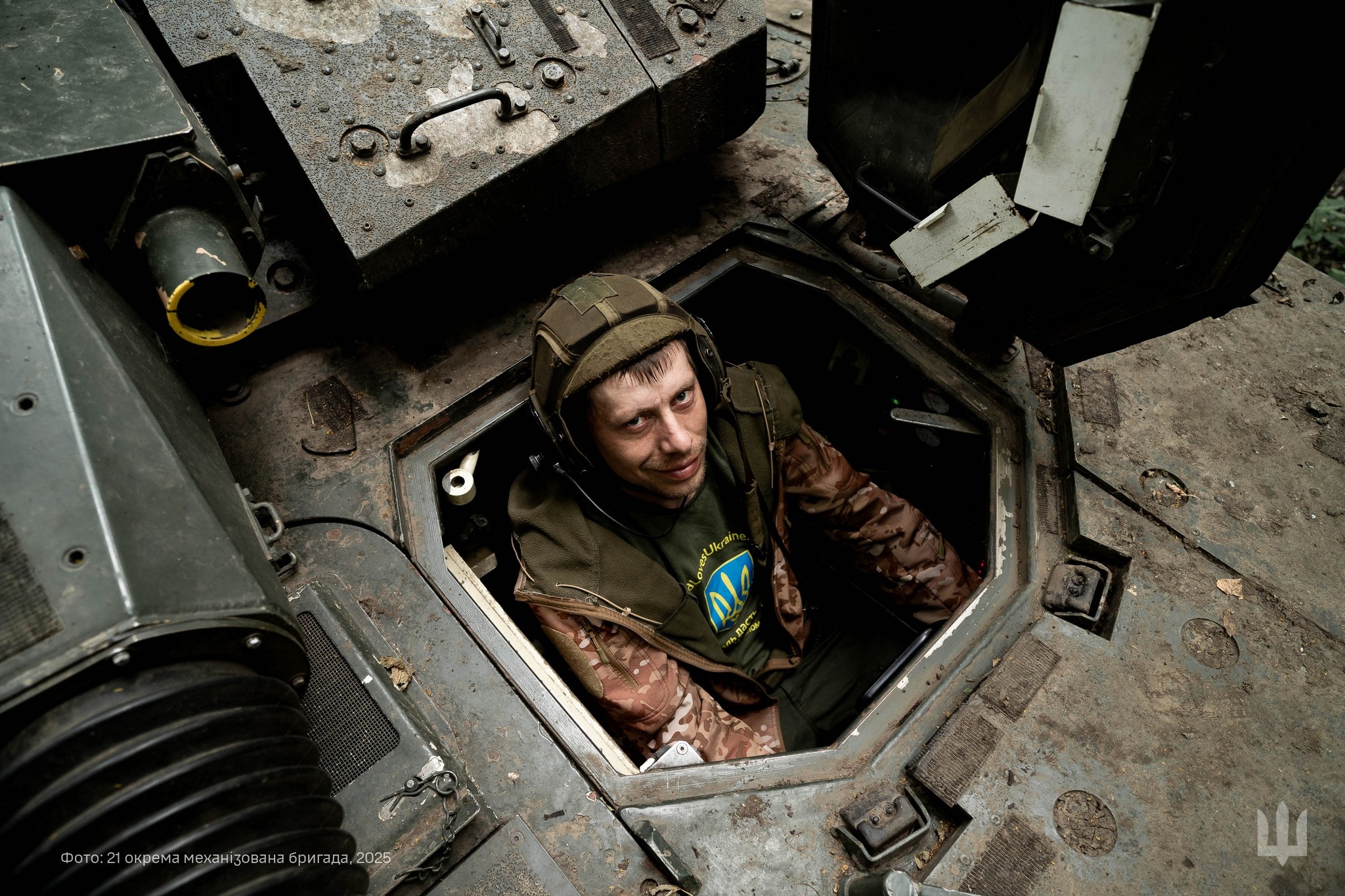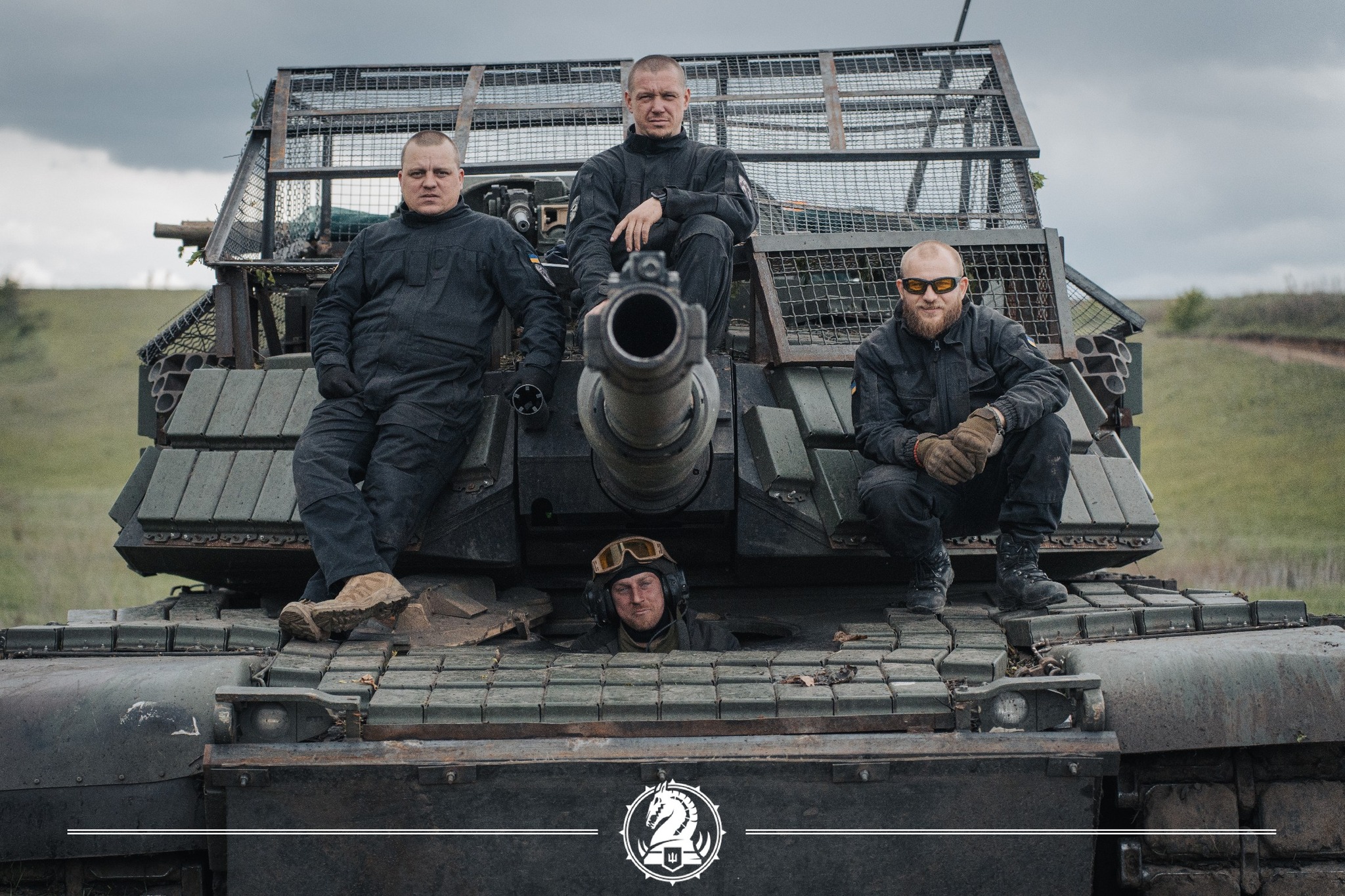On Wednesday, Russian state media posted a video captured from a Russian first-person-view drone flying low over the town of Pysarivka, in northern Ukraine’s Sumy Oblast 10 km from the border. Around 10 Ukrainian brigades with no more than 20,000 troops are holding off a much larger Russian force—50,000 troops in all—along a defensive line a few kilometers north of Pysarivka.
In the video, the Russian FPV accelerates into a Leopard 2A6 tank. The video ends as the drone strikes the front of the 69-ton tank’s turret. Don’t grieve for the tank or its crew. The Leopard 2A6 and its close cousin, the Swedish Strv 122, may be the best-protected tanks in the Ukrainian inventory. And their heaviest armor—hundreds of millimeters thick—is at precisely the spot the Russian drone struck that tank in Pysarivka.
Tanks are playing a smaller and smaller role along the 1,100-km front line of Russia’s 41-month wider war on Ukraine and tiny drones proliferate, making any movement by big, slow vehicles extremely dangerous for them and their crews. Tanks tend to hide inside or underground most of the time, deploying only briefly in order to fire a few rounds at targets kilometers away, before retreating back into hiding.
Russian fiber-optic FPV drone strikes a German-made Leopard 2A6 main battle tank operated by the Armed Forces of Ukraine in the settlement of Pysarivka, Sumy Oblast of Ukraine.
— Status-6 (Military & Conflict News) (@Archer83Able) July 2, 2025
The vehicle was hit to the turret area.
Geolocation below. pic.twitter.com/NZ9FyWDfpg
Some Ukrainian tank crews have defied expectations, however. One German-made Leopard 1A5 recently rolled out in broad daylight to engage Russian infantry at point-blank range outside the eastern fortress city of Pokrovsk. Another Ukrainian tank—seemingly an ex-Soviet T-64 or T-72—may have fired one of the decisive rounds against nearby Russian troops as the Ukrainian force finally stabilized the front line in Sumy last week.
Ukrainian tanks seem to be unusually active in Sumy—and that exposes them to drone attack. But as dangerous as drones can be, especially when they swarm in large numbers, they lack the explosive punch to knock out a Leopard 2A6 in a head-on attack.

Hard targets
Western-made tanks are tough. German vehicle-maker KMW designed the Leopard 2A6 with two compartments for its 120-millimeter main gun ammunition: one in the hull and another in the turret. The turret compartment has blow-out panels that vent a blast outward in the event the ammo is struck and cooks off; Ukrainian crews don’t use the more vulnerable hull stowage, which lacks a blowout panel.
Russian tanks by contrast stow their ammo in the bustle under their turrets. When the ammo cooks off, it blows the turret—and the crew—into the sky. That’s the main reason it’s a lot easier to damage a Leopard 2 and rattle its crew than it is to destroy a Leopard 2 and kill its crew. Whereas a clean hit on a Russian T-90 might catastrophically blow up the tank and crew.

Consider how resilient Ukraine’s small Leopard 2A6 force has been since the first of 21 ex-German and ex-Portuguese Leopards arrived in Ukraine in the spring of 2023. One analyst has tallied several dozen confirmed hits—by mines, drones, missiles and artillery—on Ukrainian Leopard 2A6s.
But the same and other analysts can confirm the destruction or capture of just eight of the 21 tanks, leaving as many as 13 in service after more than two years of hard fighting. The Ukrainian army’s 21st Mechanized Brigade operates all 13 surviving Leopard 2A6s alongside the handful of surviving Strv 122s, out of 10 Ukraine got from Sweden.
The Russians have inadvertently underscored how hard it is to defeat a Leopard 2A6. They’ve captured two—maybe three—immobilized Leopard 2A6s, and have tended to celebrate the rare captures with elaborate media productions.





